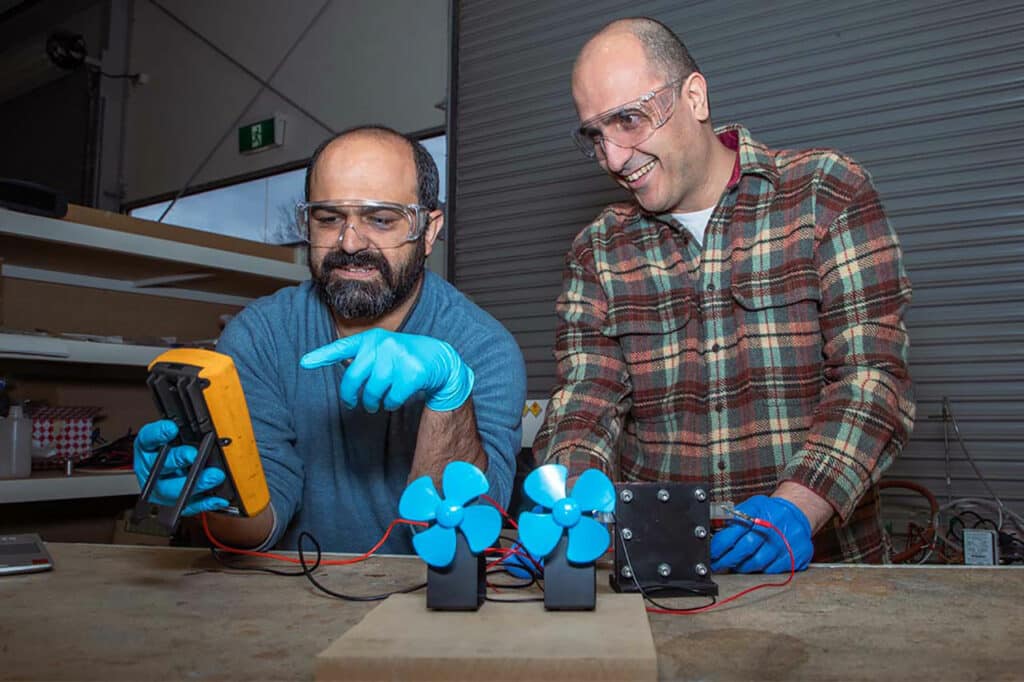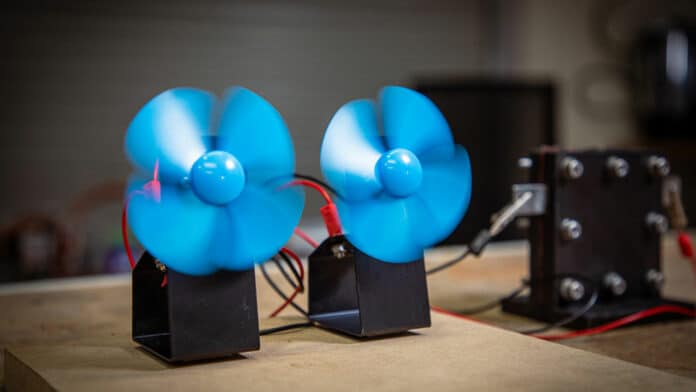It’s no secret that if we want to meet our greenhouse gas reduction goals, we need to shift our focus to renewable energy sources emitting zero emissions. However, renewable energy can be unpredictable at times, which is why we will also need to invest in significant amounts of electrical energy storage capacity to maintain a reliable and consistent energy supply, as we have grown accustomed to during the fossil fuel era.
There are already many storage technologies available that can and are being introduced. However, even collectively, they are unlikely to be sufficient to meet the massive demand for energy storage worldwide.
RMIT University engineers are vying for pole position in the global race to make a cheap rechargeable battery for storing energy that does not rely on scarce natural resources. Their latest experimental’ proton battery’ could one day be developed to power homes, vehicles, and devices – without the end-of-life environmental challenges of lithium-ion batteries.
The proton battery uses a porous activated carbon electrode soaked in a dilute acid to store hydrogen that has been split from water and then works as a hydrogen fuel cell to produce electricity. There are also no end-of-life environmental challenges with a proton battery since all components and materials can be rejuvenated, reused, or recycled, researchers say.
The proton battery works something like a reversible fuel cell. It splits water molecules during charging to generate protons, which bond to a carbon electrode. The battery avoided the energy-wasting steps of storing hydrogen gas at high pressure and then splitting these gas molecules again in fuel cells.
“When discharging, protons are released again from the carbon electrode and pass through a membrane to combine with oxygen from the air to form water – this is the reaction that generates power,” lead researcher RMIT Professor John Andrews said. “Our proton battery has much lower losses than conventional hydrogen systems, making it directly comparable to lithium-ion batteries in terms of energy efficiency.”

The recent design improvements to their proton battery meant it was becoming competitive as a carbon-neutral alternative to lithium-ion batteries.
Researchers experimentally identified and investigated the design changes to enhance energy storage capacity and power output. Key changes made were heating the overall cell to 70 degrees Celcius and replacement of the oxygen-side gas diffusion layer with a much thinner titanium-fiber sheet.
They achieved a very substantial increase in reversible hydrogen storage capacity to 2.23 wt%H (598 mAh g−1, 882 J g−1). This capacity is nearly three times that of the earlier design and more than double the highest electrochemical hydrogen storage using an acidic electrolyte previously reported.
“Our battery has an energy-per-unit mass already comparable with commercially available lithium-ion batteries while being much safer and better for the planet in terms of taking fewer resources out of the ground,” Andrews further said in a statement. “Our battery is also potentially capable of very fast charging. The main resource used in our proton battery is carbon, which is abundant, available in all countries, and cheap compared to the resources needed for other types of rechargeable battery such as lithium, cobalt, and vanadium.”
In the next step, researchers are looking forward to developing this technology further in partnership with Italian-based international automotive component supplier, Eldor Corporation, to produce a prototype battery with a storage capacity that meets the needs of a range of domestic and commercial applications. The aim is to scale up the system from the watt to the kilowatt and, ultimately, to the megawatt scale.
Journal reference:
- Seyed Mohammad Rezaei Niya, Shahin Heidari, John Andrews. Enhancement of the performance of a proton battery. Journal of Power Sources, 2022; DOI: 10.1016/j.jpowsour.2022.231808
